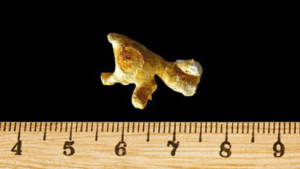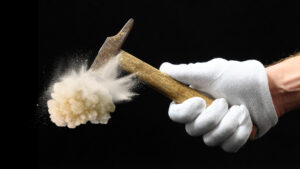Published: September 12, 2022 | 6 mins read
Live Q/A | Diet’s Impact on Kidney Stones
If you’ve ever experienced the unbearable pain of a kidney stone, you know just how crucial it is to find ways to prevent them. It can feel like a never-ending battle, and it is frustrating that whatever you eat seems to lead you to this same helpless situation. But the truth is, we end up getting kidney stones because of the mainstream misinformation we always get from our doctors about diet. Trust us, if you get your diet right, you’ll solve your kidney stone problems and most health issues you have.
That’s exactly the goal of this blog and the video interview we had with Diana. So read on and discover how to get on the proper diet.
THE PROBLEM WITH PLANT-BASED DIETS
When it comes to diet and kidney stones, it’s not as simple as eating the rainbow or following popular diet trends. Some dietary practices are counterproductive and increase kidney stone formation risk.
Diets that include high levels of fruits, vegetables, legumes, and whole grains are also rich in oxalates and can contribute to stone formation. Oxalates are naturally occurring compounds found in many plant foods. Plants use These defense chemicals to poison anything or anyone trying to eat them. Well, I can’t blame them; they can’t run away.
And that’s bad news for you if you love munching on plants. That means the Mediterranean, Paleo, and Vegetarian diets are not the right way to go if you want to solve your kidney stone issues. Again, the reason is that oxalate-rich foods are commonly consumed in all plant-based diets. Foods like spinach, chocolate, nuts, and grains are high in oxalates, the biggest promoter of stone formation.
Additionally, oxalates are notorious “anti-nutrients” in the body. Our body cannot metabolize oxalates. These troublemakers may cause other health issues, such as cardiovascular diseases when oxalate crystals deposit in the heart and blood vessels; and bone disease when oxalates bind with calcium making calcium unavailable for absorption.
HYPEROXALURIA AND KIDNEY STONES
Among kidney stones’ different types and subtypes, the most common is the Calcium Oxalate Monohydrate (COM) Stone. It forms when certain factors come into play, such as excessive urinary oxalates (hyperoxaluria) and low diuresis. Simply, this is a result of wrong dietary choices.
Hyperoxaluria occurs when there is an abundance of oxalate in the urine. It means urinary oxalate exceeds 40mg in 24-hour urine. When oxalate levels are high and bind with calcium in the urine, it leads to kidney stone formation.
Low diuresis, on the other hand, refers to insufficient urine production. When the urine is not diluted enough due to low fluid intake, the concentration of substances like calcium and oxalate increases, making it easier for stones to form.
There is no one-size-fits-all thing when it comes to kidney stones. All types and subtypes form for a very distinct reason. And if you want a better understanding of each one, see our Kidney Stone Identification page here.
Nevertheless, COM stones are directly linked to oxalate intake, which points to that granola you had for breakfast, spinach salad for lunch, and chocolate bar you ate for snacks, just like Diana.
You can get a comprehensive list of foods and their oxalate contents in our Oxalate Content in Foods PDF here.
CONSUMING OXALATES AND CALCIUM TOGETHER
While it may seem logical to consume oxalate and calcium together as they will bind in the gut instead of your kidneys, believing it will prevent kidney stone formation is unreliable. Here’s why:
- Different breakdown rates: Studies show that calcium takes about 2-3 hours to absorb in the gut, while oxalates take days. In general, the foods we eat are broken down at different rates in our digestive system.
- Binding and excretion: Even if oxalates and calcium were to bind in the gut, the resulting compound would be excreted in the feces, preventing the absorption of necessary calcium for bodily functions.
We will be releasing a separate blog article on this topic in the coming weeks. So stay tuned!
SWITCHING TO AN ANIMAL-BASED DIET
At this point, you are probably thinking, “What should I eat then?”
Well, it’s worth noting that animal-based foods such as meat, dairy, and fish do not contain oxalates. If you want to reduce your oxalate intake, incorporating more of these food groups into your diet is the right option.
The goal is to reduce oxalate intake to 80mg daily or even less. If you look at the Oxalate Content in Foods PDF, you probably have an idea of how much oxalates you are eating per meal. The sad news is, even if you are eating “low oxalate” foods, you can still accumulate high levels of oxalates in your body simply because it’s impossible to perfectly measure the level of oxalates in all the foods we eat in a day. So, our best advice is to switch to an animal-based diet or go the carnivore path if you truly want to put an end to your kidney stones.
But what about the nutrients you need? Should you take supplements?
Contrary to popular belief, meat can give you exactly all the macronutrients and micronutrients you need to thrive. Animal-based foods can provide you with essential vitamins and minerals. Even with vitamin C, you can obtain the required amount from meat sources without the risk of excessive oxalate intake. Also, a diet devoid of fiber does not necessarily lead to digestive disorders or difficulties with bowel movements. Many individuals report improved digestive health when following a carnivore diet.
THE CHALLENGE
Admit it or not, it isn’t easy to go against the wave of mainstream information pushing for plant-based diets. And we can’t blame you if you feel the same way. Once upon a time, we were also there in that same spot where we needed to make crucial decisions for our health and lifestyle.
The truth? You’re just a step away from reclaiming your health and getting your life back.
If you want to try this journey with us, you can check our Diet Coaching because we believe we can help you just as we have done for many people. We hope this article helped in your decision-making.
Please send me an email at jweichmann@stone-relief.com if you’d like to have a Live discussion similar to this regarding a topic that you are curious about!




its hard to know what to eat if i eat only animal and dairy. I limited fruit to an apple or banana or small amount of blueberries in morning. Romaine is now my salad with only cucumber and cheese. Im eating alot more animal based foods daily. Somedays its only meat and dairy, Im not eating the high oxalate foods i did before kidneystones. I dont have a wide verietly of animal receipes. for breakfast and other meals.
Hi Linda!
I definitely can appreciate your struggle. What I’ve found beneficial for those wanting more variety is a cookbook like that from Dr. Paul Saladino. I recently purchased this and was delighted by the variety.
I wish that I could give you more examples from my own life. But, I am SUPER BORING. I eat the same things every day and have pretty much for the last 5 years, lol. Food is more fuel to me than pleasure. But, I realize that I am definitely in the minority when it comes to my approach towards food 🙂
Here’s the link for the cookbook that I bought from Dr. Paul: https://www.amazon.com/Carnivore-Code-Cookbook-Strength-Delicious/dp/0358513189/ref=sr_1_1?crid=246EDJLR6WGEM&dib=eyJ2IjoiMSJ9.4R0n_wm66K1caejiJsGvb_lpNG0Gb1HBMe6TXdddNw1TTfZat-4c5k1dq7fBqt1Fm0tCDUi2SeU_OvPbA3RJAXyAQxUGxA-SFbjXgclQF6AzdpLpl1yAJXjM7p87wT0T52PgQymYsVRyiTfomZfbfZw1Tlz1FLjTI01WeD3e_w0-N1HoqOadNYZ2jEH8tlAl3I5uZwtQIb7C80PSOg8W5IYyNFVxFHvqVfa2SM_i3aY.6-mhHa6DWLxCCnSDRYrRtijNGCShqCuMQSNBO6kIchU&dib_tag=se&keywords=saladino+cookbook&qid=1733834838&sprefix=saladino+cookboo%2Caps%2C153&sr=8-1
– Joey
what about a diet to avoid brushite? Can you elaborate a little more? Many thanks
Hey @eduardosantos ,
Great question! We will actually have a video and blog on this stone type coming out in a few weeks. But, we won’t make you wait that long 🙂
Brushite stones are part of the calcium phosphate family of stones. As such, alkaline urine (pH > 7.5) is responsible for the formation of this stone type with elevated levels of calcium in the blood being a contributor. But, calcium is NOT the issue. It’s the alkaline urine.
In order to prevent this stone, you need to get your urine pH to around 7 (+/- 0.1 pH). If you do this, this stone type cannot form.
The best way to do this is to modify your diet and eliminate foods that alkalize your urine.
Hope this helps!
Thanks for your prompt reply. Have another question… Sorry.
Last couple of years. Ive done some urine analysis. Oh was ranging from 5,6 tô 6. Even though I am sure stones were formed during that períod. I was already in the a ir part of ph still forming stone. Any clue why?
Hey @eduardosantos , the video won’t be released for another few weeks as it’s still in editing. But, you’ll get an email and we’ll have a notification in here when it does get published.
Urine pH is a bit of a moving target. So, it’s possible that when you were tested you were more acidic. But, this stone type does not form in acidic or neutral urine pH. So, there’s something going on that’s pushing you in this direction.
For most people this has to do with their diet. Sure, there may be an underlying condition that may be contributing to the issue. But, at the core, most modern diseases we see stem from the things we eat.
If you’d really like to get to the bottom of this, scheduling a Coaching Call with Joey may help you uncover what’s missing or what needs to be eliminated from your diet to solve this issue.
We hope this helps!
Will you send me the vídeo? Tks